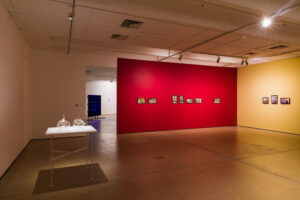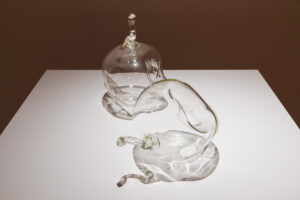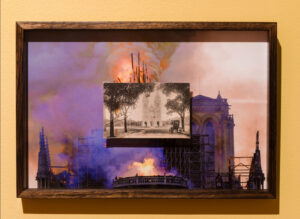This language that is every stone: Institute of Modern Art, QLD

Institute of Modern Art, Brisbane
Installation View
Photo: Joe Ruckli

Institute of Modern Art, Brisbane
Installation View
Photo: Joe Ruckli

Institute of Modern Art, Brisbane
Installation View
Photo: Joe Ruckli
Phuong Ngo, Yhonnie Scarce
12 Feb - 23 Apr 2022
This language that is every stone
INSTITUTE OF MODERN ART, Brisbane
Today, the question of preservation versus innovation seems to underlie much cultural discourse, as if a choice between cultural identity and a global homogeneity were possible. This language that is every stone examines this tension through the concept of creolisation: an idea brought to prominence by Martinican writer Édouard Glissant. Widely recognised as one of the most important literary figures of the Caribbean, Glissant was a poet and philosopher whose body of work continues to inspire and influence artists across the globe.
Glissant defined creolisation as a constant state of cultural transformation, whereby endless local difference emerges from recurrent contact between people—with one another—as well as the natural world. As Glissant writes, creolisation is “a phenomenon that is real in the world: that is to say not one of us can pretend to be shielded from the good or bad influences of the world.”
Curated by Hans Ulrich Obrist, Asad Raza, and Kamilaroi artist Warraba Weatherall, This language that is every stone is the fourth iteration in a series of exhibitions conceived by Obrist and Raza that survey Glissant’s life and work. Developed specifically within an Australian context, This language that is every stone explores cultural synthesis and permeability through the works of Australian First Nations and diasporic artists, with contributions from international counterparts.
A publication accompanying the exhibition, edited by Olivia Fairweather, Liz Nowell, Hans Ulrich Obrist, Asad Raza, and Warraba Weatherall, is now available through the Gallery Shop.
ARTISTS
Vernon Ah Kee, Robert Andrew, Daniel Boyd, Megan Cope, Manthia Diawara, Taloi Havini, Koo Jeong A, Sancintya Mohini Simpson, Phuong Ngo, The Otolith Group, Philippe Parreno, Raqs Media Collective, Khaled Sabsabi, Anri Sala, Yhonnie Scarce, Latai Taumoepeau, and Shireen Taweel
CURATED BY
Hans Ulrich Obrist, Asad Raza, Warraba Weatherall
